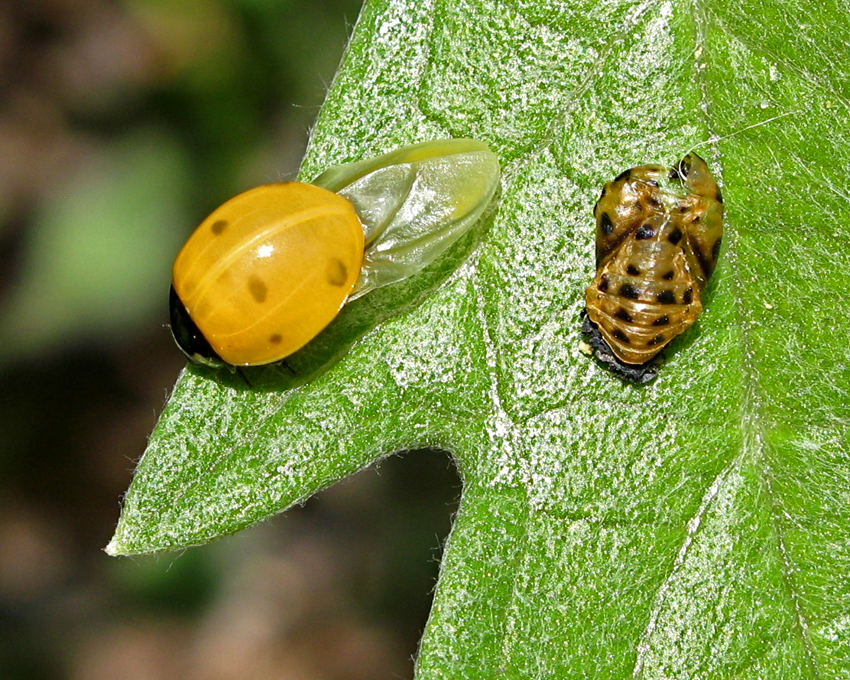New out of the box
 Though the lady bug life cycle has been covered here before, I can’t resist posting this photo of a brand new Lady Bird Beetle and its recently exited pupal casing.
Though the lady bug life cycle has been covered here before, I can’t resist posting this photo of a brand new Lady Bird Beetle and its recently exited pupal casing.
>> the bug and the box it came in. Click to enlarge, it’s a nice big file (photo A.Shock).
Just a couple of days ago, I’d noticed the pupa on an artichoke leaf in the veggie garden. It was practically the first evidence I’d seen of the spring lady bug generation’s progress since finding the eggs on the cilantro earlier this month. Later, I’d only managed to find one active larva, so I was pleased to locate this pupa. Sunday morning I went to show it to E, and there it was — split open now, while its erstwhile occupant, having backed out of the crack in the posterior of the casing, pumped its new flight wings full of hemolymph in the bright morning sun. The unripe-tomato-y quality of the elytra at this stage is perfect, starting out transluscent waxy-yellow and slowly deepening to the familiar cherry-tomato red. The spots appear and darken gradually like darkroom images, gaining contrast and intensity as the carapace dries and hardens.

How excellent that you were there at the moment. I don’t believe I have ever noticed a pupal lady beetle. The dove carcass with the egg was interesting as well. I can only imagine how uncomfortable it would be to die of egg-binding, if that is in fact what happened.
Being egg-bound is not terribly uncommon among birds, captive or wild — and its causes aren’t well-understood. At least the shell hadn’t ruptured internally, which sometimes happens. Ugh.
This is why the external reproductive techniques seem less traumatic, like just backing yourself out of a casing!
I wish my offspring had simply backed themselves out of casings, yes.
Wasn’t there a Next Generation episode like this, with an androgynous population who reproduced by means of dry husks?